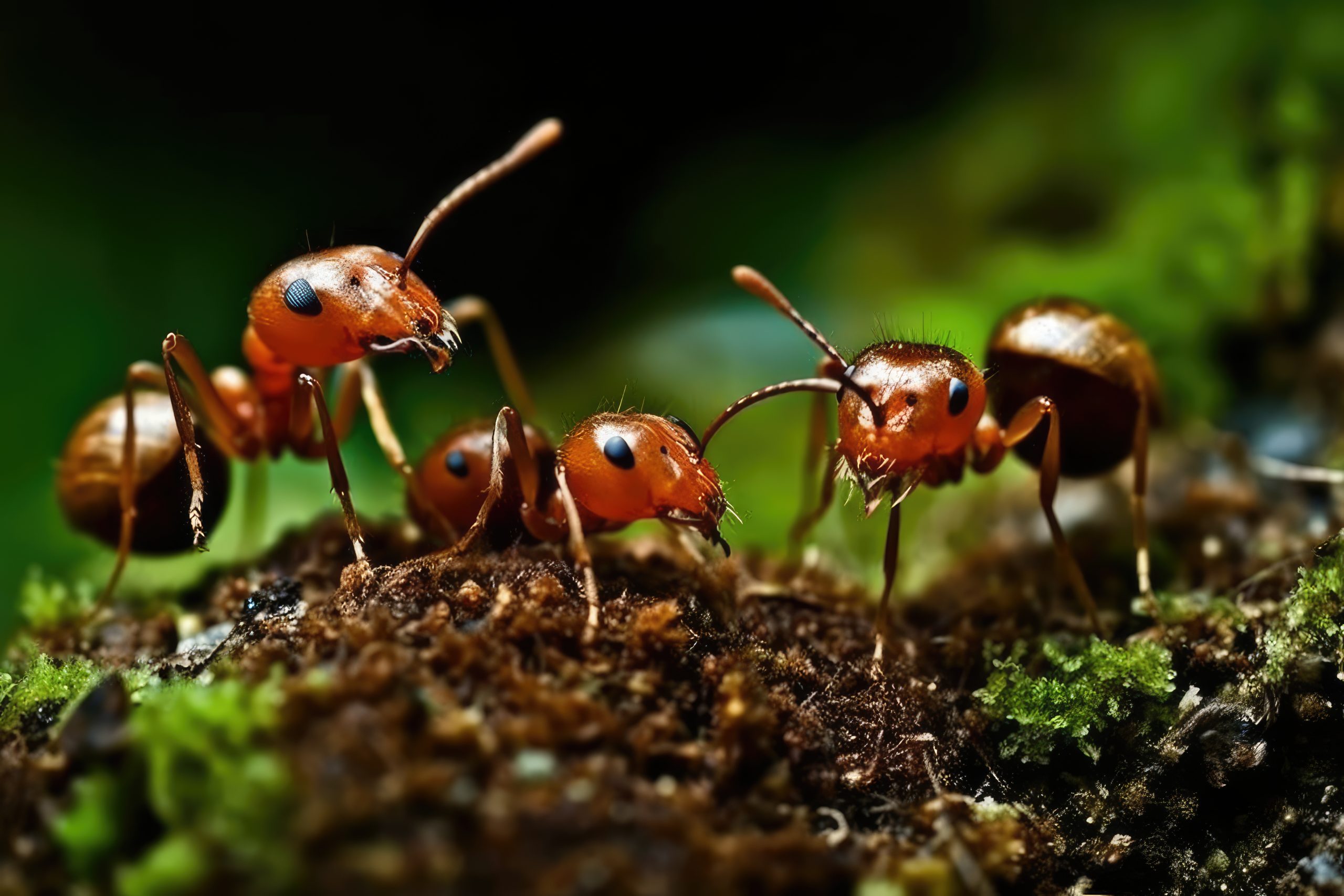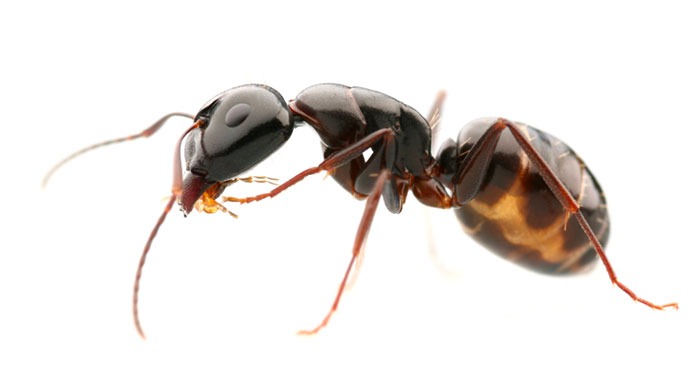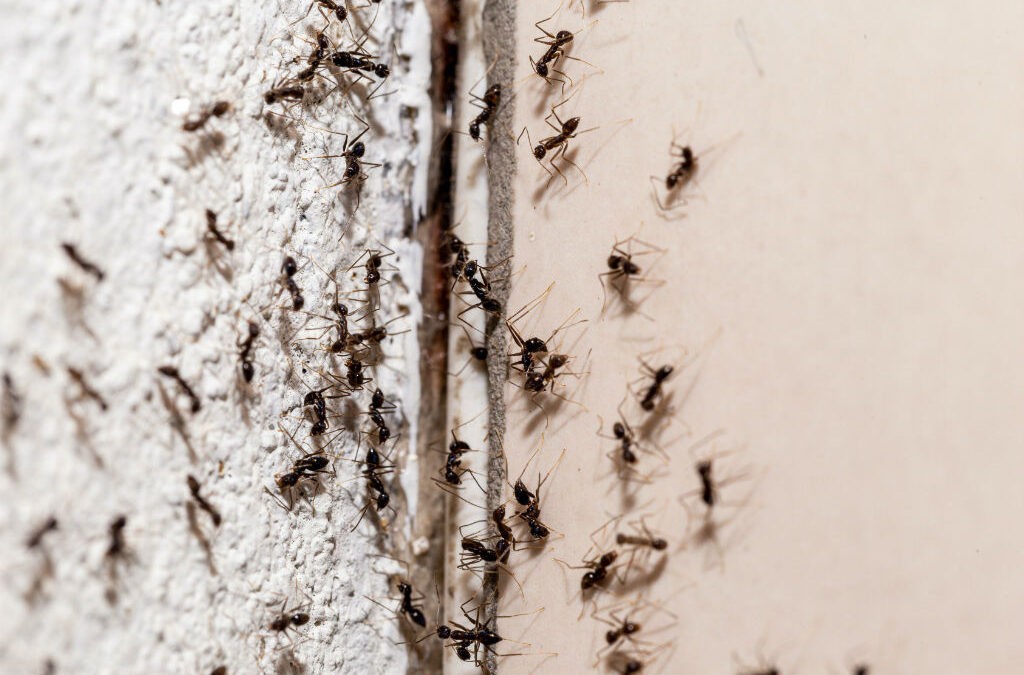The Extraordinary World of Ants: A Fascinating Journey into Their Complex Societies
Introduction:
Ants, tiny yet incredibly intricate creatures, have long fascinated scientists and laypeople alike. Despite their small size, ants exhibit astonishing intelligence and cooperation, creating highly organized societies that rival human civilizations in many ways. In this exploration, we delve into the remarkable world of ants, uncovering the secrets of their behavior, communication, and social structures.
The Diversity of Ants:
Ants are incredibly diverse, with over 12,000 known species inhabiting almost every corner of the globe, from tropical rainforests to deserts and urban environments. Each species has evolved unique adaptations to suit its specific ecological niche, resulting in a wide array of sizes, shapes, and behaviors. From the tiny pharaoh ants measuring just 1.5 millimeters to the imposing leaf-cutter ants with colonies spanning several meters, ants exhibit remarkable diversity in form and function.
Social Organization:
One of the most intriguing aspects of ants is their highly complex social organization. Ant societies are structured around reproductive individuals (queens and males) and non-reproductive individuals (workers and soldiers). Queens are responsible for laying eggs, while workers perform various tasks such as foraging, caring for the young, and defending the colony. This division of labor ensures the smooth functioning of the colony and allows ants to thrive in diverse environments.
Communication:
Despite their lack of vocal cords, ants communicate with remarkable efficiency using a combination of chemical signals, tactile cues, and even vibrations. Pheromones play a crucial role in ant communication, allowing individuals to convey information about food sources, colony status, and potential threats. Through intricate chemical signals, ants can coordinate complex tasks such as foraging expeditions and colony defense, demonstrating a level of communication that rivals that of many higher animals.
Foraging Strategies:
Ants are adept foragers, employing a variety of strategies to locate and procure food resources. Some species rely on scouts to search for food, while others use trail pheromones to guide workers to abundant food sources. Certain ants, such as the iconic leaf-cutter ants, cultivate fungi for food, forming symbiotic relationships that have persisted for millions of years. By exploiting a diverse range of food sources and foraging techniques, ants have successfully colonized almost every terrestrial habitat on Earth.
Ecological Importance:
Ants play a crucial role in terrestrial ecosystems, serving as key predators, scavengers, and seed dispersers. They help control insect populations, aerate the soil, and contribute to nutrient cycling through their activities. Certain ant species form mutualistic relationships with plants, pollinating flowers or dispersing seeds in exchange for food and shelter. Without ants, many ecosystems would struggle to function properly, highlighting the ecological importance of these tiny yet influential creatures.
Challenges and Threats::max_bytes(150000):strip_icc()/GettyImages-200494870-001-57673f415f9b58346a12c27a.jpg)
Despite their remarkable resilience, ants face numerous challenges in the modern world, including habitat loss, climate change, and invasive species. Human activities such as deforestation, urbanization, and agriculture have led to the destruction of ant habitats and the decline of certain species. In addition, the introduction of invasive ant species has disrupted native ecosystems, leading to declines in biodiversity and ecosystem stability. Addressing these threats requires concerted conservation efforts and a deeper understanding of ant ecology and behavior.
ants are truly extraordinary creatures that have adapted to thrive in diverse environments through their complex societies, sophisticated communication, and remarkable ecological roles. By studying ants, we gain valuable insights into the principles of social organization, cooperation, and adaptation that are fundamental to all life on Earth. As we continue to explore and appreciate the wonders of the ant world, we also recognize the importance of conserving these remarkable insects and the ecosystems they inhabit for future generations.
The Evolution of Ant Societies:
To truly appreciate the complexity of ant societies, it's essential to understand their evolutionary origins. Ants belong to the order Hymenoptera, which also includes bees and wasps. The ancestor of ants is believed to be a solitary wasp-like insect that gradually transitioned to a social lifestyle over millions of years. This transition likely occurred as a result of environmental pressures and the benefits of cooperative behavior, such as increased foraging efficiency and colony defense.
Early ant species likely formed simple colonies consisting of a single reproductive female and her offspring. Over time, these colonies became more complex, with individuals specializing in different tasks and behaviors. The development of reproductive castes, including queens and workers, was a key innovation that allowed ant colonies to grow larger and more organized. Through natural selection, colonies with efficient division of labor and effective communication systems outcompeted others, leading to the evolution of highly sophisticated ant societies.
The Role of Queens:
Queens play a central role in ant colonies, serving as the primary reproductive individuals responsible for laying eggs. In many species, queens mate only once in their lifetime and store sperm in specialized organs, allowing them to fertilize eggs throughout their lifespan. The size and longevity of queens vary among species, with some queens living for several years and producing millions of offspring.
The success of a colony often depends on the fertility and health of its queen. If a queen dies or becomes incapable of laying eggs, the colony may struggle to survive. In certain ant species, workers can replace a lost queen by selecting and nurturing a new queen from among the existing larvae. This process, known as "queen replacement," ensures the continuity of the colony's reproductive cycle and maintains its overall stability.
Division of Labor:
One of the defining features of ant societies is the division of labor among colony members. Workers specialize in various tasks such as foraging, caring for the young, maintaining the nest, and defending the colony against predators. The division of labor is not static and can change in response to environmental conditions, colony size, and resource availability.
The development of task specialization allows ant colonies to function as highly efficient superorganisms, with each individual contributing to the overall success of the colony. Through complex interactions and communication, ants coordinate their activities to optimize resource acquisition and colony growth. The division of labor also helps ants adapt to changing environmental conditions, ensuring the resilience and flexibility of their societies.
Communication and Coordination:
Effective communication is essential for the functioning of ant societies, allowing individuals to coordinate their activities and respond rapidly to changes in their environment. Ants communicate primarily through chemical signals called pheromones, which are produced and detected using specialized glands and receptors.
Trail pheromones, for example, are used by foraging ants to mark paths between the nest and food sources, allowing other workers to follow the trail and locate the food efficiently. Alarm pheromones are released in response to threats, triggering a coordinated defensive response from colony members. By exchanging chemical signals, ants can convey information about food availability, colony status, and potential dangers, facilitating collective decision-making and resource allocation.
In addition to chemical communication, ants also use tactile cues, such as antennal tapping and body posture, to convey information to other colony members. Through a combination of chemical and tactile signals, ants can coordinate complex tasks such as prey capture, nest construction, and colony relocation, demonstrating a level of communication and cooperation that is unparalleled in the insect world.
Conclusion:
In conclusion, the evolution of ant societies represents one of the most fascinating and successful adaptations in the animal kingdom. From humble beginnings as solitary insects, ants have evolved into highly organized superorganisms capable of remarkable feats of cooperation and coordination. Through the division of labor, effective communication, and collective decision-making, ant colonies are able to thrive in diverse environments and overcome the many challenges they face.



































